Theorie komplexer Biosysteme
Prof. Ulrich Gerland
Forschungsgebiet
In physics, interactions between particles follow laws. In biology, interactions between biomolecules serve a function. We study the physics of biological functions. In particular, we are interested in cases where the implementations of biological functions are constrained by physical principles. Methods from statistical physics help to describe the functioning of complex biomolecular systems on a coarse-grained, but quantitative level.
Mitarbeiterinnen und Mitarbeiter der Arbeitsgruppe
Professor
| Photo | Akad. Grad | Vorname | Nachname | Raum | Telefon | |
|---|---|---|---|---|---|---|
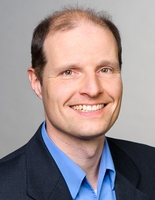
|
Prof. Dr. | Ulrich | Gerland | 333 | +49 89 289-12394 |
Sekretariat
| Photo | Akad. Grad | Vorname | Nachname | Raum | Telefon | |
|---|---|---|---|---|---|---|
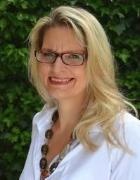
|
Daniela | Neufang | – | +49 89 289-12662 | ||

|
Dipl.-Betriebsw. (FH) | Claudia | Öckler | – | +49 89 289 12662 |
Wissenschaftlerinnen und Wissenschaftler
| Photo | Akad. Grad | Vorname | Nachname | Raum | Telefon | |
|---|---|---|---|---|---|---|

|
Dr. | Bernhard | Altaner | – | – | |

|
M.Sc. | Mareike | Bojer | – | – | |

|
M.Sc. | Julio Cesar | Espinoza Campos | 317 | – | |
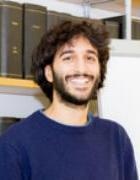
|
Dr. | Giovanni | Giunta | 331 | +49 89 289-12389 | |

|
M.Sc. | Zara Helen | Gough | – | – | |

|
M.Sc. | Frauke | Huth | – | – | |

|
M.Sc. | Stephan | Kremser | 325 | +49 89 289-12388 | |

|
M.Sc. | Gabin | Laurent | – | – | |

|
Dr. | Cesar | Lopez Pastrana | – | – | |
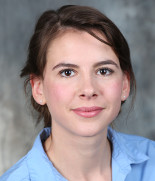
|
M.Sc. | Linda | Martini | 315 | – | |

|
M.Sc. | Johannes | Raith | 313 | – | |

|
M.Sc. | Tobias | Thun | 313 | +49 89 289-12385 |
Studierende
| Photo | Akad. Grad | Vorname | Nachname | Raum | Telefon | |
|---|---|---|---|---|---|---|

|
B.Sc. | Ludwig | Burger | – | – | |

|
Eike Sebastian | Eberhard | – | – | ||

|
Annelie | Laforest | – | – | ||

|
B.Sc. | Julius | Lehmann | – | – | |

|
Paul | Schulze | – | – | ||
Andere Mitarbeiterinnen und Mitarbeiter
| Photo | Akad. Grad | Vorname | Nachname | Raum | Telefon | |
|---|---|---|---|---|---|---|

|
M.Sc. | Johannes | Harth-Kitzerow | – | – | |

|
Maria | Molina Anton | – | – | ||
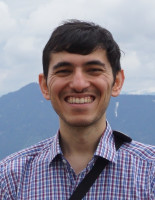
|
Ph.D. | Seyed Hamid | Seyed Allaei | – | – | |

|
Dr. | Michael | Wolff | 321 | +49 89 289-12722 | |

|
Lukas | Zett | – | – |
Lehrangebot der Arbeitsgruppe
Lehrveranstaltungen mit Beteiligung der Arbeitsgruppe
Abgeschlossene und laufende Abschlussarbeiten an der Arbeitsgruppe
- Computational Models for the Growth of Closed Bacterial Cell Envelopes
- Abschlussarbeit im Masterstudiengang Physics (Applied and Engineering Physics)
- Themensteller(in): Ulrich Gerland
- Effects of Enhanced Diffusion in Enzyme-loaded Vesicles: A Multiscale Simulation Study
- Abschlussarbeit im Masterstudiengang Physik (Biophysik)
- Themensteller(in): Ulrich Gerland
- Effect of Glutathione on the Inoculum Effect in E.coli
- Abschlussarbeit im Bachelorstudiengang Physik
- Themensteller(in): Ulrich Gerland
- Horizontal Gene Transfer in Starving E. Coli Cultures
- Abschlussarbeit im Masterstudiengang Physics (Applied and Engineering Physics)
- Themensteller(in): Ulrich Gerland
- Physical Models of Geometrically and Mechanically Controlled Bacterial Cell Envelope Growth via Local Interactions
- Abschlussarbeit im Masterstudiengang Physik (Biophysik)
- Themensteller(in): Ulrich Gerland
- Coupling Short-Range Signaling with Cellular Dynamics for Biological Pattern Formation
- Abschlussarbeit im Masterstudiengang Physik (Biophysik)
- Themensteller(in): Ulrich Gerland
- How might bacteria grow robustly?
- Abschlussarbeit im Masterstudiengang Physik (Physik der kondensierten Materie)
- Themensteller(in): Ulrich Gerland